The Gift of South Dakota
Subscriptions to South Dakota Magazine make great gifts!
Subscribe today — 1 year (6 issues) is just $29!
Wild Horses in Winter
Editor’s Note: The Black Hills Wild Horse Sanctuary is no longer open to visitors. This story is revised from the January/February 2019 issue of South Dakota Magazine. To order a copy or to subscribe, call (800) 456-5117.
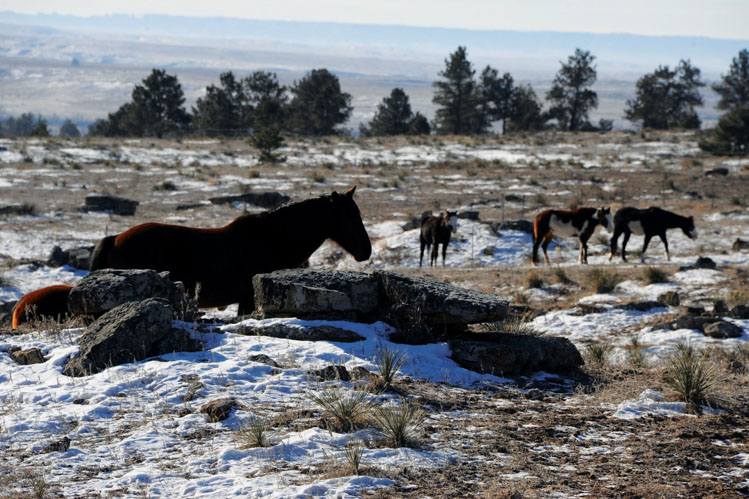 |
| The mustangs of Fall River County wander steep cliffs that descend to the Cheyenne River Valley, the highlands of Hell Canyon and other Black Hills geological wonders. |
We arrived at the Wild Horse Sanctuary on a cold and sunny winter afternoon. The mustangs, shaggy with winter hair, didn’t even glance up as we drove down a good gravel road toward what looks like many other West River ranches.
Two old houses and several modest barns sat at the end of the road. Wild turkeys were roosting on the hitch of an old horse-drawn wagon and deer — several with massive antlers — grazed near some haystacks. A smattering of snow lay around the corrals; deeper drifts could be seen in the hills above.
An aura of peacefulness blankets many South Dakota farms and ranches, especially in winter when the pace slows for man and beast. Still, you’ll find few places with more tranquility than this spacious, 14,000-acre sanctuary in Fall River County, a 10-minute drive south of Hot Springs on Highway 71.
Writer and naturalist Dayton Hyde founded the sanctuary in 1988 and helped to oversee its operations until his death in December 2018, but its wild mustangs have always been the stars. They are descendants from horses brought to Mexico and Central America 500 years ago by Spanish explorers. Despite their southern roots, they’ve acclimated well to the northern plains. “If you took them from California in the winter they might not be ready,” Hyde told us, “but if they come in the summer they’ll grow hair in the fall. They also know instinctively to maintain a closeness to the other horses; they’ll bunch up and warm each other. It’s the way they battle the flies in the summer and the snow and cold of winter.”
“The horses seem to like winter better than the heat of summer,” adds Susan Watt, executive director of the sanctuary for the past 20 years. But too much confinement makes them uncomfortable. “If someone wants to keep them in a barn, they’ll think, ‘oh no, that’s not what I like to do.’”
The horses do appreciate some human intervention. “We park the tour busses near the corrals so they break the north wind, and the horses don’t seem to mind that,” says Watt.
A full belly is the best defense against a South Dakota winter, and once again the humans of the sanctuary play a hand; they feed a half million dollars worth of hay every winter, along with a molasses supplement called “cake.”
 |
| Sanctuary staff have names like Painted Lady, Medicine Hattie and Magnificent Mary, for many of the wild mares. The horses may nick and bite one another to establish herd hierarchy. |
As the sun disappeared behind the Cheyenne River bluffs, we retired to a cabin. After dark, it’s eerily quiet. You might hear a coyote’s howl, or the hoot of an owl. Walk outdoors, and you’ll believe those astronomers who speculate that there may be 100 billion stars in our Milky Way Galaxy; their brightness illuminates the sky, the chalky river bluffs and the snow-covered grassland.
Horses corralled near the sanctuary headquarters were already feeling frisky as the sun showed itself in the morning. Perhaps they were anticipating the molasses cake; some were frolicking, nipping at one another’s necks, establishing their pecking order. Their steaming breath floated in the 10-degree air.
A sanctuary staffer offered to give us a pickup tour. We rattled across frozen ruts and rocks, heading for high ground. Elevation at the sanctuary headquarters is 3,500 feet; we reached an overlook that measures 4,500 feet.
There the snow was a foot high in spots, deeper yet in the ravines, and the ponderosa pine forest was a glistening winter wonderland. Mule deer with racks like Santa’s reindeer grazed on winter grasses in the meadows. A coyote sauntered ahead of us.
As we neared several small herds of wild horses, we parked the pickup. Soon we were surrounded by a dozen or more of the most curious. The mustangs can be jealous and may even bite with their big teeth. Our guide says they never nicked a visitor, though she was once lightly bitten on the thigh. The safest place to stand is along the shoulder or flank.
On summer outings, the guide carries a stick and a bucket in the truck box in case she spots a rattlesnake. That’s not a worry in winter —flies or snakes are nowhere to be found.
This land marks the convergence of the great northern prairie and the deciduous Black Hills ponderosa pine forest, so the views are unique to the world. Pelicans fish on the Cheyenne River, which twists through the very heart of the sanctuary. Cascade Creek, fed by the ever-warm spring waters that gave name to the nearby city of Hot Springs, steams on a winter’s day. In summer, sunbathers and swimmers congregate at Cascade Falls, a historic swimming hole just north of the sanctuary along Highway 71. In winter, the little falls — bordered by foliage frosted from the mist — are an ethereal sight.
We drove past a Sun Dance lodge where Lakota men and women gather in the summers for vision quests, sun dances and other spiritual and cultural activities. In winter, cedar branches that shade the Native Americans in July are now brown and dry. Buffalo skulls, bleached as white as the snow, are lined on a slope. Hyde welcomed the sun dancers 20 years ago and they have been coming back ever since.
The sanctuary also includes ancient Lakota hunting grounds where people came to collect medicinal plants and herbs along the river. Hell Canyon, Wildcat Canyon and a dozen other scenic and historic crevices spill out of the southern Black Hills onto the rough hill country.
The sanctuary staff know the names of the families who homesteaded there, and even the history of the roads that pass through the five-square-mile sanctuary. Yes, roads have histories here. They’re not taken for granted. Ranchers depend on roads that cross each others’ pastures for access to the main roads.
Fences also have histories, even gates; an automatic gate was installed to ease the aging Hyde’s comings and goings. Unfortunately, the mustangs quickly figured it out. They learned that if enough of them stand and squeeze against it, that it will open. Basically, they know they have to simulate a vehicle.
Even in winter snow, yucca, prickly pear cactus, buffalo grass and other vegetation peeks through on the windswept hilltops. As we returned to the ranch headquarters, we noticed a newer variety of plant — a tidy vineyard of Concord grapes, now dormant and leafless.
Quiet and solitude are year-round virtues of the sanctuary. Winter simply adds an extra hush.


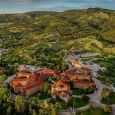
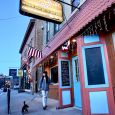
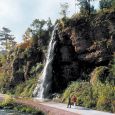
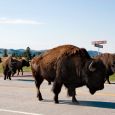
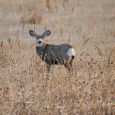
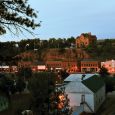


Comments